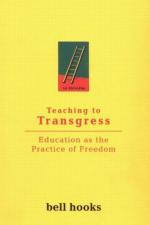
|
| Name: _________________________ | Period: ___________________ |
This test consists of 15 multiple choice questions and 5 short answer questions.
Multiple Choice Questions
1. What was the first observation that Hooks makes with regard to the main issue she is going to talk about in Chapter 15?
(a) It is a major issue that is often discussed.
(b) It is a minor issue that is rarely discussed.
(c) It is a minor issue that is often discussed.
(d) It is a major issue but rarely discussed.
2. What did Hooks combine in Chapter 13?
(a) Truth and fiction.
(b) Theory and practice.
(c) Education and religion.
(d) Love and marriage.
3. What did Hooks write about people who are experiencing very oppressive conditions?
(a) They should deflect that oppression onto others.
(b) All should be sensitive to those people.
(c) If it's not affecting one directly, he/she should not worry about it.
(d) They are experiencing the oppression because they deserve it.
4. What problem did Hooks say white women face in terms of white men?
(a) The ability to persuade white men that they too should have the right to be educated.
(b) The ability to prevent white men from physically abusing them.
(c) The ability to convince them that they should receive equal pay for the same jobs they do as white men.
(d) The ability to prevent white men from becoming sexually involved with black women.
5. How did Hooks say black and white women are treated?
(a) They are treated no differently than black and white men.
(b) They are treated as if they are second-class citizens.
(c) They are treated as if they are an important part of society.
(d) They are treated as if they are in mutual sexual competition with each other.
6. What did Hooks say affects how she subjectively relates to teaching?
(a) Only her preconceived notions.
(b) Only the lack of preconceived notions.
(c) Preconceived notions and lack thereof.
(d) Other people's opinions of her.
7. What is the topic of the great leap forward that Hooks received from one of her male students?
(a) Opposition to the practice of rape.
(b) Promotion of the practice of interracial dating.
(c) Opposition to the practice of racism.
(d) Promotion of the practice of sexism
8. What was the profession of Hooks' friend?
(a) Teacher.
(b) Minister.
(c) Doctor.
(d) Lawyer.
9. Hooks said what of each region of the United States?
(a) They have their own ideas and language.
(b) They have their own language and types of people.
(c) They have their own demographics and types of people.
(d) They have their own demographics and types of religion.
10. What was the major problem Hooks faced within the patriarchal framework?
(a) Sexism.
(b) Racism.
(c) Age discrimination.
(d) Class distinction.
11. What did Hooks say about the presence of a teacher in a classroom?
(a) It is unappreciated.
(b) It is appreciated but not necessary.
(c) It is necessary.
(d) It is not necessary.
12. What is the last name of Hooks' friend mentioned in Chapter 13?
(a) Scapp.
(b) Bapp.
(c) Klapp.
(d) Dunlap.
13. What company published "Teaching to Transgress: Education as the Practice of Freedom"?
(a) Random House.
(b) Penguin Group.
(c) Routledge.
(d) Johnson.
14. How did Hooks view the instructional methods used by teachers?
(a) There are not many to choose from.
(b) They vary according to the gender of the teacher.
(c) They vary according to the region of the country in which one lives.
(d) There are many to choose from.
15. According to Hooks, who are more vulnerable to white men than white women?
(a) Chinese women.
(b) Black men.
(c) Hispanic men.
(d) Black women.
Short Answer Questions
1. In Chapter 12, Hooks wrote about the patriarchal structure within what context?
2. Chapter 9 said that Hooks' work would have been published through what system if it hadn't been flawed?
3. Chapter 14 said that it is also often the case that there is a particular strain of _____.
4. What did Chapter 14 say about the role the students say the teacher has in the learning process?
5. What did Hooks say about most white people during the period of slavery?
|
This section contains 696 words (approx. 3 pages at 300 words per page) |

|




